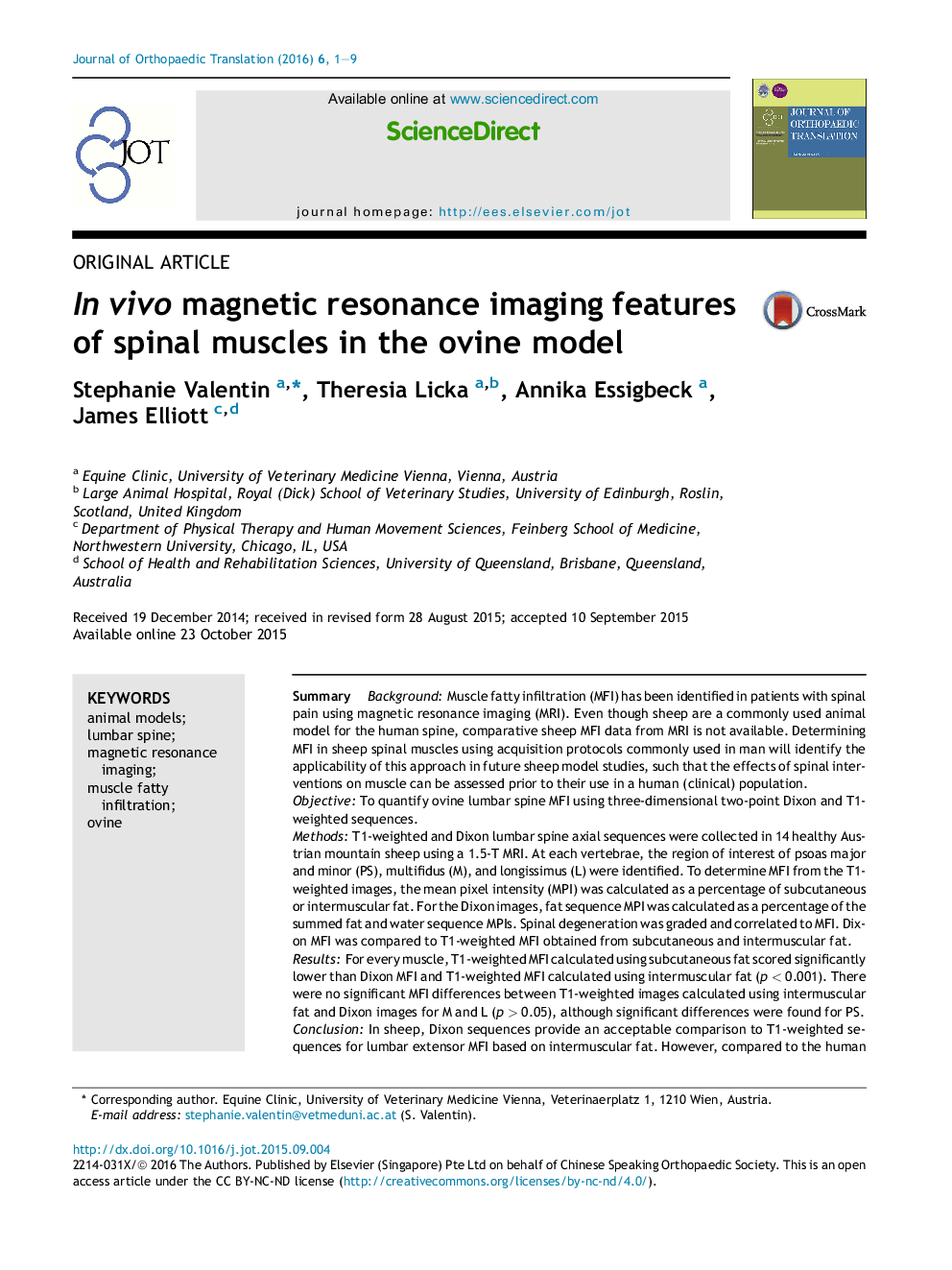| Article ID | Journal | Published Year | Pages | File Type |
|---|---|---|---|---|
| 2739769 | Journal of Orthopaedic Translation | 2016 | 9 Pages |
SummaryBackgroundMuscle fatty infiltration (MFI) has been identified in patients with spinal pain using magnetic resonance imaging (MRI). Even though sheep are a commonly used animal model for the human spine, comparative sheep MFI data from MRI is not available. Determining MFI in sheep spinal muscles using acquisition protocols commonly used in man will identify the applicability of this approach in future sheep model studies, such that the effects of spinal interventions on muscle can be assessed prior to their use in a human (clinical) population.ObjectiveTo quantify ovine lumbar spine MFI using three-dimensional two-point Dixon and T1-weighted sequences.MethodsT1-weighted and Dixon lumbar spine axial sequences were collected in 14 healthy Austrian mountain sheep using a 1.5-T MRI. At each vertebrae, the region of interest of psoas major and minor (PS), multifidus (M), and longissimus (L) were identified. To determine MFI from the T1-weighted images, the mean pixel intensity (MPI) was calculated as a percentage of subcutaneous or intermuscular fat. For the Dixon images, fat sequence MPI was calculated as a percentage of the summed fat and water sequence MPIs. Spinal degeneration was graded and correlated to MFI. Dixon MFI was compared to T1-weighted MFI obtained from subcutaneous and intermuscular fat.ResultsFor every muscle, T1-weighted MFI calculated using subcutaneous fat scored significantly lower than Dixon MFI and T1-weighted MFI calculated using intermuscular fat (p < 0.001). There were no significant MFI differences between T1-weighted images calculated using intermuscular fat and Dixon images for M and L (p > 0.05), although significant differences were found for PS.ConclusionIn sheep, Dixon sequences provide an acceptable comparison to T1-weighted sequences for lumbar extensor MFI based on intermuscular fat. However, compared to the human literature, ovine lumbar musculature contains greater MFI, making interspecies comparisons more complex.
